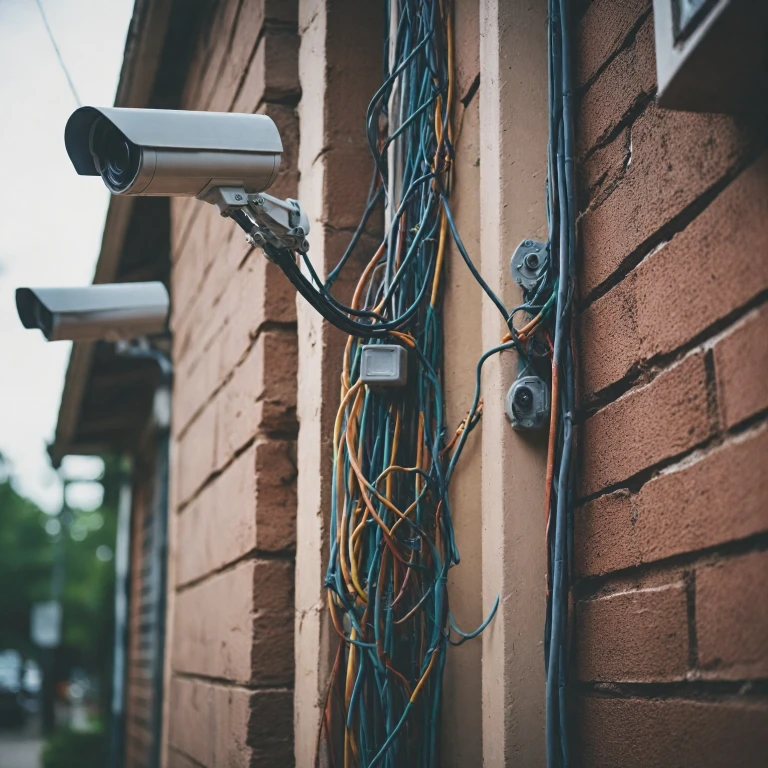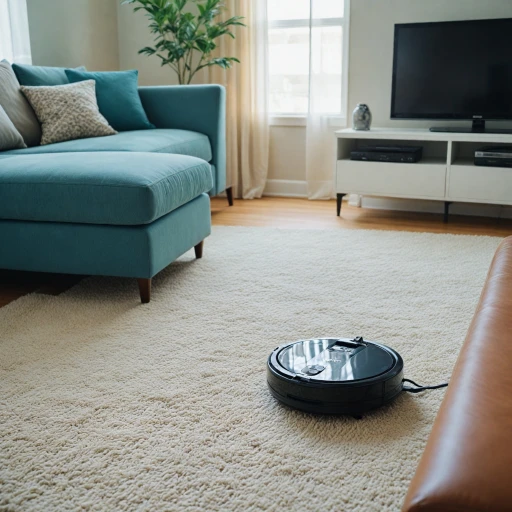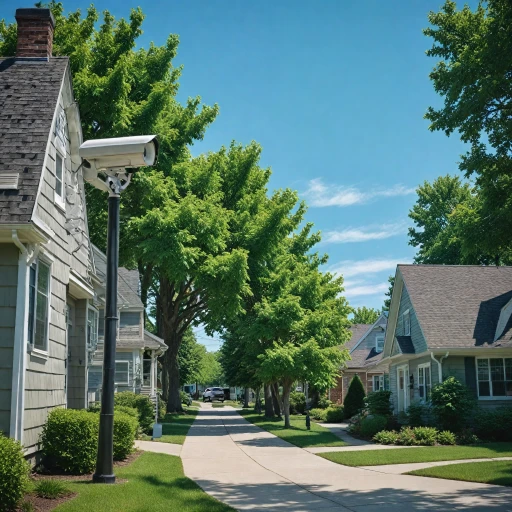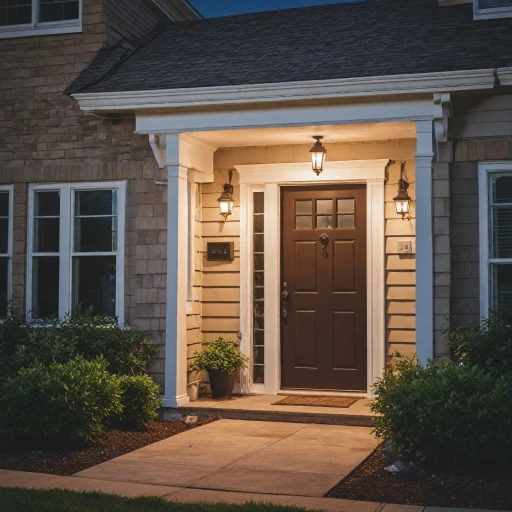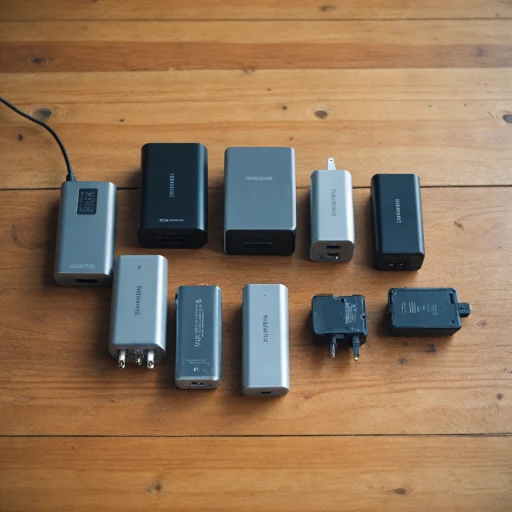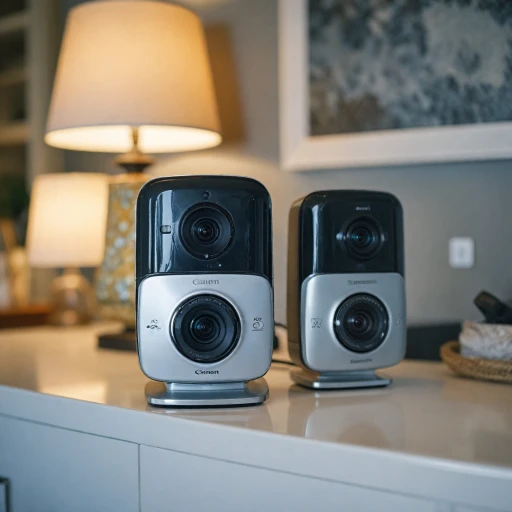
The Role of CCTV Camera Cords in Home Security
The Essential Role of Cords in Your Security Setup
CCTV cameras are a fundamental component of any home security system, but the cables that connect them often go unnoticed. They are the silent heroes behind the seamless operation of your surveillance system. Essential for transmitting video, audio, and power, the right selection of cables can determine the reliability and effectiveness of your security cameras. The primary function of these cords is to ensure a stable connection within your CCTV setup. By linking the components of your security camera systems—including cameras, power sources, and recording devices—they help maintain a smooth flow of video and audio data. This connectivity is crucial for monitoring your property efficiently, without interruptions or data loss. Cables such as coaxial, siamese, and Ethernet offer diverse choices for camera cabling needs, each with its own advantages. Coaxial cables, particularly popular in older systems, are known for their reliability in transmitting video signals. Siamese cables, on the other hand, conveniently combine power and video into a single run, making them a versatile choice. The use of Ethernet cables is on the rise with the advance of modern IP cameras. These cables support both video transmission and power delivery over longer distances, adding flexibility to your camera placement. Their ability to transmit data efficiently and sustain a security system's operation is undeniable, particularly in systems with multiple cameras. Furthermore, connectors such as BNC, and adapters are critical for ensuring the cables fit appropriately within the system. Selecting the right combination boosts performance and lifespan, minimizing the risk of technical issues later on. Comprehensive understanding of the cables' role in your security system can significantly enhance your monitoring activities. It's important to note that as technologies evolve, the role of cords and connectors will continue to adapt, offering even more innovative solutions to improve home security. For more on how advanced technologies fit into your home security framework, explore the understanding the role of modern systems.Types of CCTV Camera Cords
An Overview of CCTV Camera Cables
Understanding the various options available for CCTV camera cables is crucial for setting up a reliable security system. Different cable types, whether for delivering video, audio, or power, can significantly impact the effectiveness and reliability of a security camera system.The Selection of Coaxial and BNC Cable Types
When talking about traditional security systems, coaxial cables are common choices. These cables are preferred for their ability to transmit video over long distances without losing quality. They are often paired with BNC connectors, which provide a secure and reliable connection for video and audio signals. Selecting the right coaxial cable can be crucial for the proper functionality of your security cameras.The Versatility of Siamese Cables
Siamese cables are another popular choice for CCTV systems. These cables combine both video and power in a single line, making them highly efficient and easy to install. Siamese cables allow for a cleaner setup, as one cable handles multiple functions, reducing the clutter of separate wires. This type of cable is particularly useful in reducing installation time and simplifying the maintenance of your security setup.Ethernet and Cat Cables for Modern Systems
In IP-based camera systems, ethernet cables such as Cat5e or Cat6 are widely used. These cables are capable of transmitting both video and data, offering flexibility and ease of use in digital systems. Ethernet cables can also power security cameras through Power over Ethernet (PoE) technology, eliminating the need for additional power cables and simplifying the installation process.The Role of Patch Cables and Adapters
In more complex camera systems, patch cables and adapters play an important role. They facilitate connections between different components of the security system, ensuring that all parts of the system can communicate effectively. Adapters may also be used when integrating different types of cables, like connecting coaxial to ethernet cables.Future Trends and Technological Advancements
As technology evolves, we may see cables that support even greater data transfer rates and improved durability. Innovations in video power cables and connector technology continue to enhance the capabilities of security systems. For more insights on optimizing security system settings, explore optimizing blue iris camera settings for home security to keep your CCTV system running smoothly.Choosing the Right CCTV Camera Cords
Deciding on the Best Cable for Your Home CCTV System
Ensuring optimal performance of your security cameras hinges not just on the cameras themselves, but also on choosing the right camera cables. Selecting the correct type and quality of cables is crucial to maintaining a reliable security system. Here’s a guide to help you determine what to look for when you're picking out cables for your camera system.
Firstly, consider the power requirements of your cameras. Some setups require separate power cables, while others, like the popular siamese cables, integrate video power with coaxial cable in a single bundle, making your installation neater and potentially more efficient. If you employ siamese cables, both the video and the power cord are run together, simplifying setup and reducing the quantity of cable management needed.
For network-based systems, ethernet cables are indispensable. Categories of cat cables like Cat 5 or the newer Cat 6 can provide enhanced speeds and power capabilities, ideal for modern security cameras that support Power over Ethernet (PoE). This approach can often simplify installations, as it allows camera systems to use a single ethernet cable for both video and power.
Additionally, don't overlook the importance of connectors. BNC connectors are a classic choice for coaxial cables, ensuring solid video signals crucial for quality footage. Notably, for systems requiring meticulous audio feeds or specific devices, adapters might be necessary to integrate various components effectively.
In summary, whether opting for coaxial, siamese cable, or ethernet, the key to an efficient security camera setup lies in understanding your specific needs and system capabilities. Making informed choices at the outset of your planning can vastly improve the longevity and reliability of your security system. For more insights into enhancing your home’s security setup, consider exploring resources such as enhancing home safety with the right systems.
Installation Tips for CCTV Camera Cords
Ensuring a Seamless Installation of CCTV Camera Cords
Installing CCTV camera cords effectively is crucial in establishing a reliable security system within your home. Proper installation ensures optimal camera performance and minimizes complications that can arise due to incorrect setups. Firstly, consider the type of cables you are using. Options such as coaxial cables, Ethernet cables, and USB cables all come with different considerations. Ensuring that the cables are compatible with your CCTV system is essential for seamless integration.- Power Cables and Siamese Cable: Siamese cables, which include both power and video cords, are favored for their dual functionality. They allow streamlined connections, reducing clutter and potential installation errors.
- Environmental Considerations: Outdoor cameras require weather-resistant cables. It's important to select cables that can withstand various weather conditions to maintain camera functionality throughout the year.
- Cable Length and Routing: Ensure you have sufficiently long cables to connect your cameras to the main security system. Plan the cable route to avoid physical obstacles and potential signal interference.
- Connectors and Adapters: Make use of BNC connectors or similar high-quality connectors that ensure solid connectivity. This is especially important for systems that utilize coaxial or similar cables.
Troubleshooting Common Cord Issues
Resolving Common Issues with CCTV Camera Cords
Dealing with common issues related to your CCTV camera cords can be frustrating, but understanding the solutions can help maintain the effectiveness of your home security system. Here are some typical problems you might encounter along with straightforward solutions.- Loose Connections: Secure connections are crucial to ensure the transmission of audio and video signals. Ensure that all connectors, such as BNC connectors or power connectors, are tightly fitted to the respective ports. If loose, gently tighten them, or consider replacing them with new, compatible connectors.
- Signal Interference: Interference can often disrupt the video feed from your CCTV cameras. To minimize this, avoid running camera cables parallel to electrical cables. Instead, use coaxial cables, which are less susceptible to interference. Additionally, using shielded video power cables can enhance your system’s performance by reducing signal loss.
- Power Supply Issues: An interrupted power supply can cause a camera to stop working abruptly. Regularly check the power cables for any visible damage or wear and ensure the power cord is correctly plugged in. In case of damage, replace the cables with high-quality power cables to maintain a steady power supply.
- Weather Damage: For outdoor cameras, exposure to extreme weather conditions can damage cables. Consider using waterproof siamese cables, which are designed for durability. Alternatively, verify that connectors and cables are adequately shielded against moisture to prevent short-circuiting.
- Cable Wear and Tear: Over time, cables can become worn or frayed. Regular inspections can help identify these issues early. If wear and tear are observed, replace the affected camera cables promptly to prevent connectivity problems.
Future Trends in CCTV Camera Cord Technology
Emerging Innovations in Security Camera Cabling
The evolution of home security systems is closely tied to the advancements in CCTV camera cords. As technology progresses, new types of cables and connectivity options are becoming integral to modernize home security setups. Traditional coaxial cables are being supplemented by more versatile options, catering to the growing demands for efficiency and adaptability.- Incorporating Ethernet Cables: Ethernet cables, with their ability to carry video, audio, and power signals, are increasingly favored over older types of camera cables. The integration of Power over Ethernet (PoE) is pivotal, allowing devices to receive power and data through a single cable, simplifying installation and reducing clutter.
- Wireless Connectivity Trends: While cords remain crucial for many systems, the shift towards wireless options is undeniable. This shift reduces reliance on cables, offering more flexibility in camera placement, and easing the installation process. However, for reliable performance, maintaining a mix of wired and wireless connections might be beneficial, especially with security cameras requiring stable signals.
- Advanced Connectors and Adapters: Innovations in connectors and adapters are paving the way for seamless integration between different system types. The adaptation from traditional BNC connectors to advanced options plays a significant role in accommodating modern security systems, enhancing compatibility and functionality.
- Environmentally Conscious Designs: As sustainability becomes a priority, manufacturers are exploring cables made from environmentally friendly materials. Innovations in power cables and patch cables that utilize recycled components are beginning to emerge, aligning security systems with eco-friendly practices.
- Enhanced Cable Durability: The durability of CCTV cords is also seeing substantial improvements. Research into high-resilience materials ensures longevity and performance, even in harsh weather conditions, thereby enhancing the reliability of outdoor security cameras.

